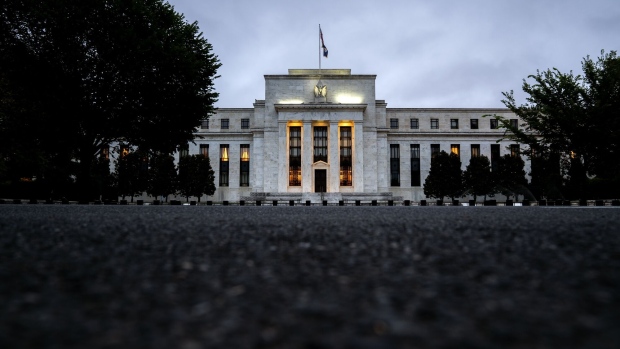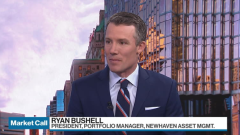Feb 1, 2024
Goldman Sachs, Bank of America Throw in the Towel on Fed Rate Cut in March
, Bloomberg News

(Bloomberg) -- Economists are taking Jerome Powell’s words to heart and erasing the last of their forecasts for a March interest-rate cut as they set their sights on May.
Goldman Sachs Group Inc., Bank of America Corp. and Barclays Plc — among the last Wall Street holdouts expecting the Federal Reserve to start lowering their benchmark rate as soon as March — have pushed back their forecasts for cuts after the conclusion of the central bank’s policy meeting Wednesday.
Forecasters are turning their focus to a second-quarter move after the policy-setting Federal Open Market Committee said it needed “greater confidence” inflation is sustainably heading to its 2% goal before cutting rates, and Powell surprised markets by saying a rate cut at the Fed’s March 19-20 meeting is unlikely.
With several pivotal economic data releases on the labor market and inflation to come before the Fed’s May meeting, even economists who had penciled in a June cut are treading more cautiously.
Read more: Fed Keeps Rates Steady While Powell Says March Cut Unlikely
“When the chair essentially rules out a March rate cut twice in the same answer, we have to take the signal on board,” a BofA team including Michael Gapen and Mark Cabana wrote in a note after the meeting.
BofA pushed back their forecast for the first rate cut to June from March, citing a dearth of inflation readings before May and the Fed preferring to make policy changes at meetings with new quarterly economic projections. But, “May is on the table,” they added, also shifting expectations for when the Fed will announce a tapering of its balance-sheet runoff, to May from March.
Read more: Powell Says Slowing Balance Sheet Unwind on Table For March
At Goldman Sachs, economist Jan Hatzius and team now expect the Fed to first cut rates at its April 30-May 1 meeting versus March previously — although they are still calling for a total of 125 basis points of easing this year. Barclays similarly sees the Fed first cutting rates in May instead of March.
Swaps traders are amping up their bets on a cut in May too, and more than two quarter-point cuts are priced for June, seven basis points higher than Tuesday. The odds of March easing fell to roughly one-in-three for a quarter-point cut before rising again as forecasters and investors question their most dovish wagers.
Read more: Wall Street Gets Reality Check as Powell Saps Fast Rate-Cut Bets
For other banks, such as JPMorgan Chase & Co. and Deutsche Bank AG, the Powell press conference and Fed statement affirmed calls for second-quarter cuts — but also prompted them to consider that a move at the Fed’s April 30-May 1 meeting is possible.
“We are sticking with our call for a first cut in June,” JPMorgan economist Michael Feroli wrote in a Wednesday note. “But after Powell’s remarks it’s not hard to see a configuration of employment and inflation data that gets the Committee cutting by May.”
What Bloomberg Economics Says:
“Plug the current inflation trajectory and the Fed’s own unemployment outlook into the inertial Taylor rule, which the Fed appears to have followed since mid-2022, and it also flags a March cut”
- Anna Wong and Estelle Ou
For the full note, click here.
Nonetheless, some still see the Fed’s express commitment to data-dependence leaving any possibility, including a March move, still on the table.
At Bloomberg Economics, a team led by Anna Wong held fast to their call for a March Fed cut, given that “continued soft inflation data and weaker labor-market data ultimately will allow officials to gain enough confidence,” they wrote.
©2024 Bloomberg L.P.






